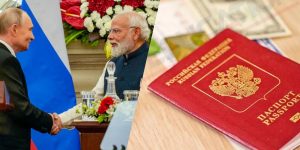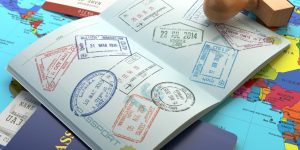When considering international travel today, it’s more important than ever to understand the key differences in the Passport vs Visa debate. A passport is your national identification document issued by your home country, while a visa grants permission from your destination country to enter, stay, or leave for a specified purpose and time.
With visa‑on‑arrival options, e‑visas and digital travel rules gaining ground in 2025, knowing when and how each document applies can save you time, money, and stress.
In this guide, we’ll clarify what a passport is, what a visa is, and break down what is the difference between a visa and a passport in clear terms for today’s travellers.
Difference Between A Passport And A Visa
Both a passport and a visa are essential for international travel, but they serve very different purposes.
| Feature | Passport | Visa |
|---|---|---|
| Purpose | Confirms your identity and nationality | Grants permission to enter a foreign country |
| Issued By | Government of your home country | Embassy or consulate of the destination country |
| Document Time Required | 2–8 weeks | Few days to several weeks |
| Types | standard passports, diplomatic passports, and official/service passports. | Tourist, Work, Student, Transit |
| Required For | All international travel | Only for certain countries and passport holders |
| Validity | Usually 5 to 10 years | Depends on the visa type |
| Format | Booklet with photo and personal information | Stamp, sticker, or electronic approval |
| Price (Avg.) | $50–$165 USD | $160 to $135 |
Note: The visa prices listed above are just estimates. Actual costs can change depending on the country and type of visa.
Always check the official government websites of the country you’re travelling to for the most up-to-date information.
What is a Passport?
A passport is an ID book given by your government that proves you belong to a country. It contains important details like your photo, name, birthday, and passport number.
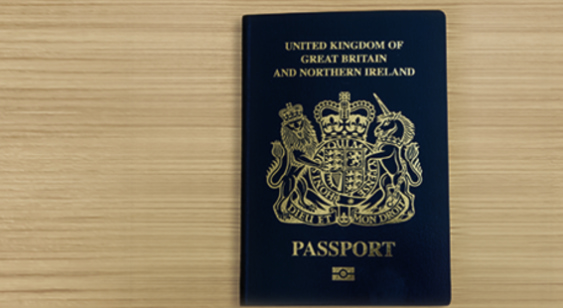
When you enter or leave a country, officials put stamps in your passport to record where you have been.
Every country requires you to show your passport at the border when exiting your own country & and also when entering a new one. Without a passport, you cannot enter other countries or return to your own. It’s also important to note here that you cannot get a visa without having a valid passport.
How Many Types of Passports Exist?
Regular Passport
A Regular Passport is the most common type used by U.S. citizens for everyday travel like vacations, business trips, or studying abroad.
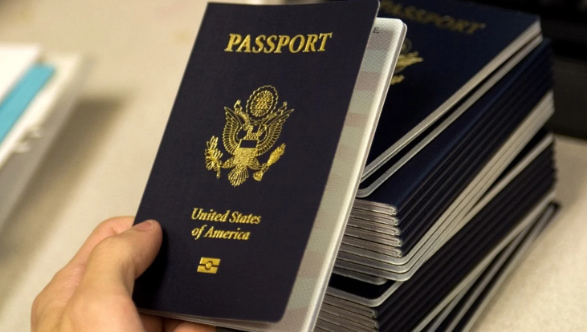
It allows international travel and is accepted in most countries around the world.
It also proves your U.S. citizenship and identity to foreign governments. Depending on the country you’re visiting, a Regular Passport can allow visa-free or easier entry, making it a powerful document for global travel.
Service Passport
A Service Passport is issued to people working for the U.S. government abroad, especially contractors and non-diplomatic staff.
It shows that the traveler is supporting official government missions in other countries.
Although it doesn’t carry the full privileges of a diplomatic passport, it still offers recognition and ease of travel when used for government-related work.
Official Passport
An Official Passport is used by U.S. government employees and military personnel when they travel overseas for official duties.
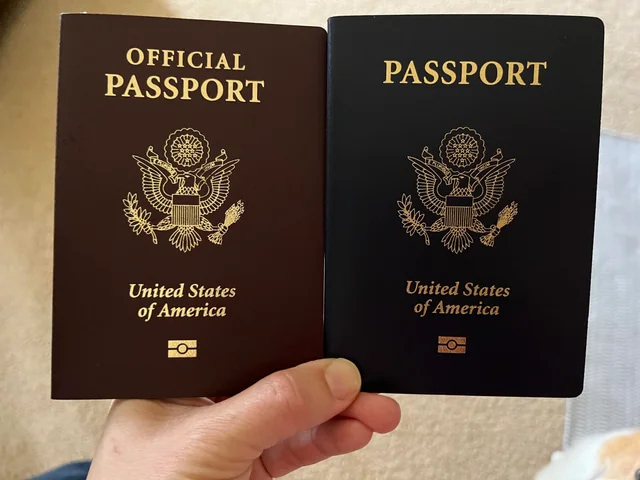
It represents the traveler as someone performing work on behalf of the U.S. government.
This passport is not for personal vacations or private trips; it is strictly for government business.
In many countries, an official passport offers formal advantages and smoother movement during official assignments.
Diplomatic Passport
A Diplomatic Passport is given to U.S. diplomats, high-ranking officials, and sometimes their family members when they are posted abroad for official diplomatic missions.
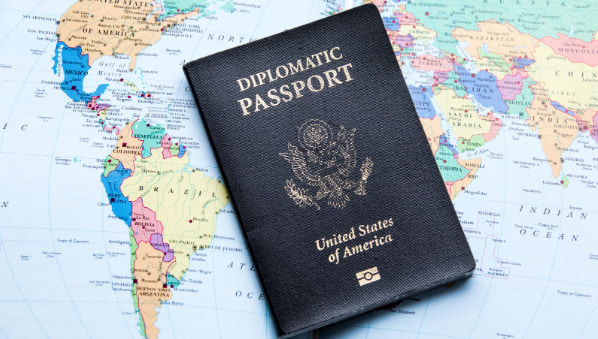
It shows that the holder is representing the U.S. government at a senior level.
Along with global respect, this passport may also offer diplomatic privileges like legal immunity, depending on international agreements.
The passport has significant weight in global relations and is used in high-level foreign affairs.
Can You Travel Without A Passport?
You can travel without a passport, but only to certain places based on your citizenship.
Some countries and regions have special rules that allow travel with other ID cards instead of a passport.
For example, Indian citizens can visit Nepal and Bhutan using a voter ID, while Americans can go to Puerto Rico or the U.S. Virgin Islands with just a driver’s license.
Germans can travel to many European countries, like France and Italy, using their national ID card.
These rules exist because of close ties or shared regions. Still, it’s important to carry a valid photo ID when you travel.
What Is A Visa?
A visa is permission from a country that allows you to enter and stay there for a certain time.
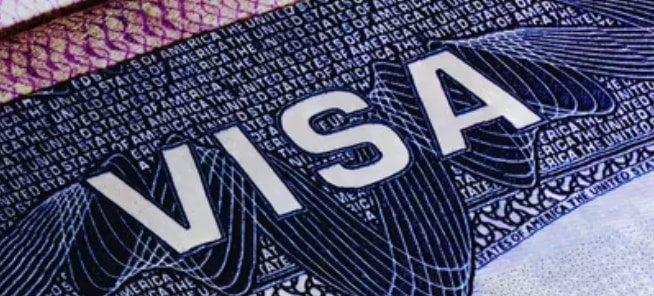
A visa looks like a sticker or stamp on a passport page. It shows details like your name, visa type, country, dates allowed, and any special conditions.
There are different types of visas for different reasons. For example, a tourist visa lets you visit a country for a holiday, a work visa lets you do a job, and a student visa lets you study in a school or college.
Countries give visas to people so they can check the person entering and the reason for their visit.
This helps keep the country safe and makes sure visitors follow the country’s laws and rules.
How Many Types of Visas Exist?
There are 8 main types of visas, each made for a different purpose. These include:
- Tourist Visa
- student, work, business, transit, medical, immigrant, and diplomatic visas.
Each visa has its own rules, stay limit, and documents needed. For example, a tourist visa is for holidays, a student visa is for studying, and a work visa is for doing a job in another country.
Choosing the right visa is very important. It helps you avoid problems like entry refusal or delays and makes your trip smooth and safe.
Which Country Requires a Visa?
Many countries require a visa depending on your nationality and the reason for your visit.
For example, travelers from India need a visa to visit countries like the United States, the UK, or most European nations.
Each country has its own visa rules, and some offer visa-free or visa-on-arrival options. Always check the visa requirements before planning your trip.
How To Apply For A Visa And Passport?
To travel internationally, you must apply for a visa or passport by following a few simple steps:
- Research the requirements: Check the official website to know what documents and rules apply.
- Fill out the application form: Complete the form carefully with correct personal and travel details.
- Gather required documents: Collect your passport (if applying for a visa), photos, financial proof, and travel plans.
- Schedule an appointment or submit online: Book a visit to the visa/passport center or apply online if allowed.
- Pay the fee: Submit the required payment using the accepted method.
- Attend an interview (if needed): Go to the center for an interview or give fingerprints if required.
- Wait for processing and approval: Track your application and wait for the visa or passport to be approved and delivered.
Visa vs Passport Price: What’s the Cost Difference?
When preparing for a trip, understanding the price differences between a visa and a passport is essential.
| Document | Cost Range | What Changes Cost | Extra Info |
|---|---|---|---|
| Passport | $50 – $200 | Your country, speed, age | Faster service costs more |
| Visa | $0 – $300+ | Which country, visa type, speed | Some countries give free visas |
A passport is a one-time cost and works for many trips until it expires. You only need to renew it every few years.
Visas, on the other hand, are often needed for each trip. This means visa costs can add up over time, especially if you travel frequently.
Note: The Visa and Passport costs mentioned above are just estimates.
Actual costs can change depending on the country and type of visa. Always check the official website for the most up-to-date information.
Do Passport Power Affect Visa Approval Chances?
How strong your passport is really matters for getting visas and travel freedom.
Strong passports from countries like Germany, Singapore, and Japan get visa approvals more easily.
These countries have good relationships worldwide. Citizens with these passports can visit 170+ countries without visas.
Singapore is considered to have one of the strongest passports globally, offering visa-free or visa-on-arrival access to 193 destinations.
Weaker passports may face strict rules, longer waits, and more rejections. However, meeting all visa requirements and providing the necessary documents can still lead to Visa approval.
Common Misconceptions About Passport and Visa
Many travelers often confuse a passport with a visa, thinking they serve the same purpose. Here are some key points to clarify:
- A passport is an official document that proves your identity and citizenship.
- A visa is a permission granted by a country that allows you to enter, stay, or travel through it for a specific period.
- Visas are not always required; some countries offer visa-free entry or visa-on-arrival options for certain nationalities.
- Always check the entry requirements for your destination to avoid surprises at immigration.
Latest Trends & Digital Options in Travel Documentation
Governments are rapidly adopting digital travel documents to improve security, with the global e‑passport market expected to grow from USD 69.6 B in 2025 to USD 479 B by 2035.
- E‑Visas: Apply online before travel; reduces paperwork and processing time.
- Visa‑On‑Arrival: Available in more countries, offering flexible short-term entry.
- E‑Passports: Embedded RFID chips store biometric data for faster, secure immigration.
- Digital Passports: Mobile-based IDs and chip-enabled passports improving border clearance.
- Global Adoption: Countries like India and Finland rolling out e‑passports and digital ID initiatives.
Related Read:
Final Thoughts: Passport vs Visa – Key Differences Explained
Understanding the Passport vs Visa difference is essential for every traveler. A passport proves your identity, while a visa grants permission to enter a specific country.
All travelers must have a valid passport, but visa rules vary by nationality and destination. Always check the latest passport and visa requirements to ensure a smooth and hassle-free journey.
FAQs
Some countries allow dual citizenship, which means a person can legally have two valid passports from different nations.
You can visit your country’s embassy or consulate to get a temporary or emergency passport to return home safely.
Visa approval depends on meeting all requirements, providing correct documents, and convincing the immigration officer of your intent.
Children need separate passports for international travel, and the process usually involves both parents and extra documentation.
A passport proves your identity and citizenship, while a visa grants permission to enter or stay in a foreign country; both are essential for international travel.

